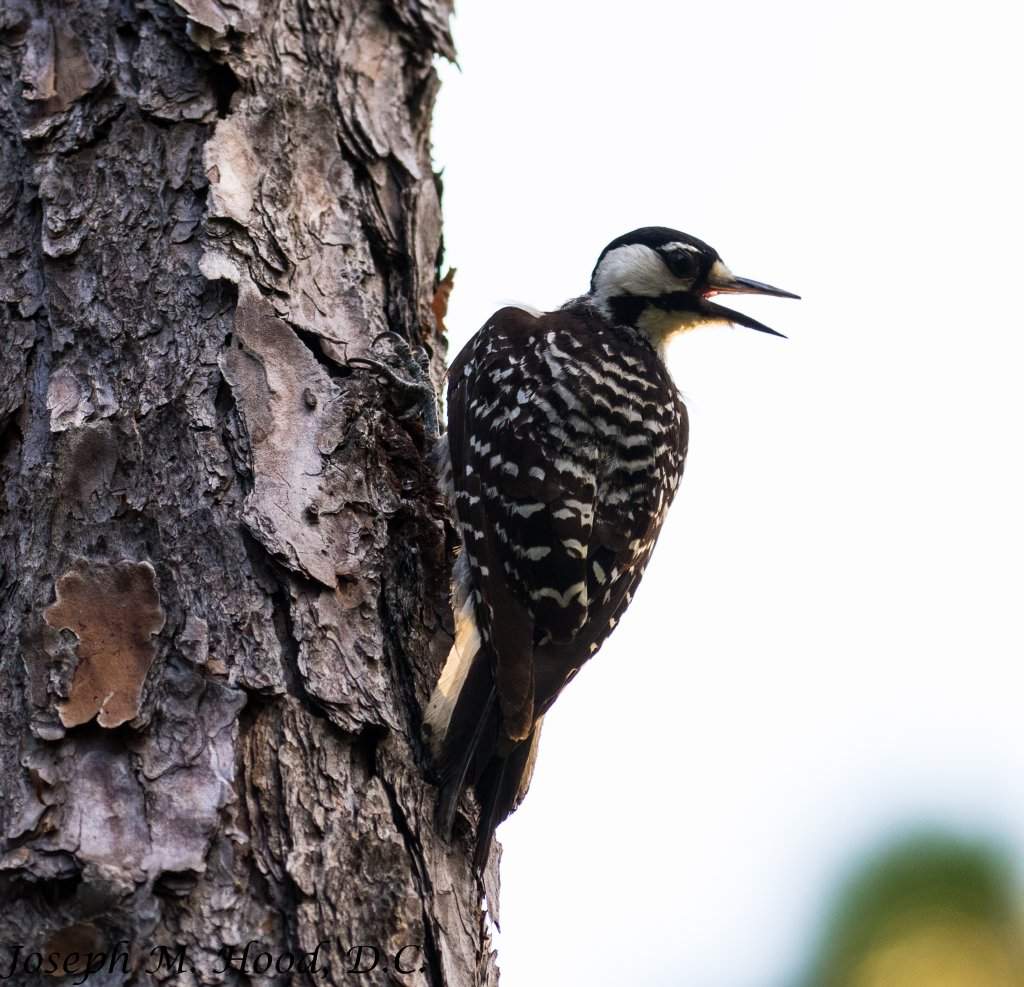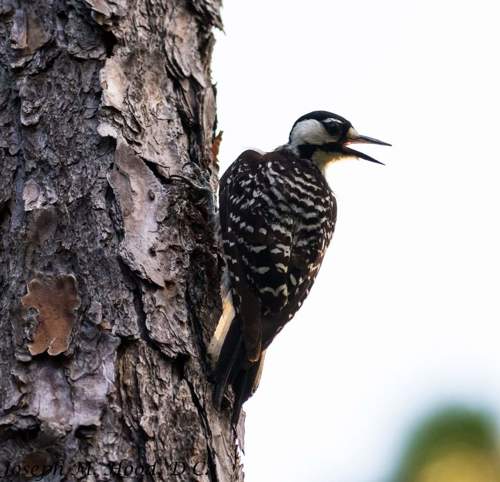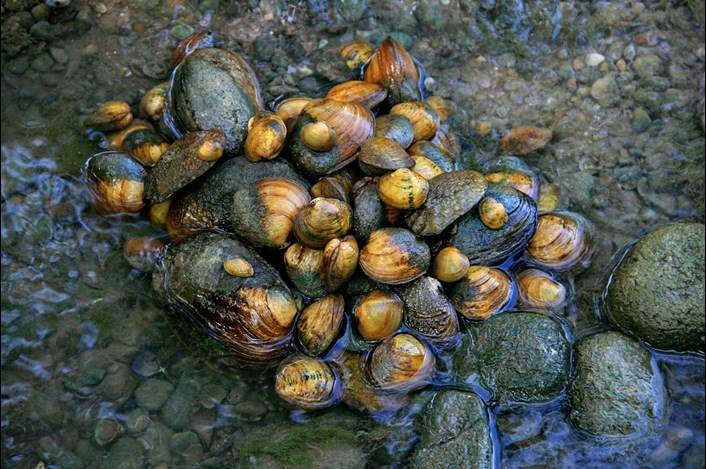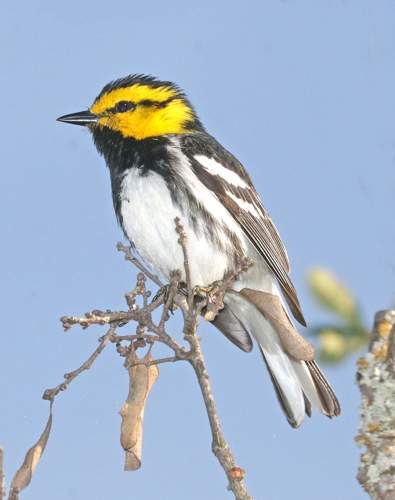

What Landowners Need to Know as We Reflect on 50 Years of the Endangered Species Act
To reflect on 50 years of the Endangered Species Act this fall is to acknowledge the nation’s wildlife and wild places in its simplest form. At the Texas A&M Natural Resources Institute, it's an opportunity to appreciate the research at the nexus of national security, conservation, and healthy working lands. Every day, we look to strengthen wildlife conservation and to keep working lands sustainable.
At the heart of the Endangered Species Act is a safety net for our nation’s wildlife, fish and plants on the brink of extinction. The Act protects thousands of endangered species and millions of acres of habitat. Too often we read about species-related crises and conflict, while success stories go relatively unpublicized and uncelebrated. While the ESA is frequently portrayed as a command-control approach to wildlife conservation, that portrayal isn’t always true, and it certainly doesn’t need to be. Indeed, the ESA works most effectively when its requirements never come into play because it spurs proactive conservation actions among federal, state, and private sector stakeholders, including the private landowners who manage more than 95 percent of Texas lands. The successes of the gopher tortoise, the greater sage grouse, and others are examples of the flexibility and creativity that can be employed under the ESA.
Flexibility, creativity and collaboration thread continuously through the endangered species-focused efforts when we can resolve to leave a species status better than we found it. Through species status assessments, the science backbone determining listing, delisting and down listing decisions, and innovative solutions working to accomplish species conservation, we can develop necessary and revolutionary policy every year.
At the end of the day, it's critical to conserve key habitats and populations, but the beauty of taking on this great responsibility is the opportunity to connect and work with private landowners, communities, industries, and the military.
Endangered Species Preservation Act 0f 1966 and the Convention on International Trade in Endangered Species
Looking back, in the United States, wildlife populations were declining rapidly in the 20th century from overexploitation and habitat destruction and the U.S. government attempted to solve this massive problem partially through legislation. Starting with the passage of the Endangered Species Preservation Act (ESPA) in 1966, Congress began establishing protections for endangered fish and wildlife species. This Act was brought about due to concerns about diminishing whooping crane (Grus americana) numbers and tasked the Department of Interior (DOI) with carrying out programs to conserve and restore certain native species in danger of extinction. Unfortunately, the ESPA was far from thorough and did not list many species of concern or prevent the public from “taking” them and degrading their habitat.
Further conservation efforts were made with the Convention on International Trade in Endangered Species of Wild Fauna and Flora (CITES), which was signed in March 1973 and aims to regulate international trade of endangered plant and animal species. Although this was a massive success for preventing the harmful use and trade of endangered species internationally, improved domestic regulation was still needed that not only protected the exploitation of plant and animal species, but preserved their habitats and ecosystems as well.
The Endangered Species Act of 1973
Later in 1973, the Endangered Species Act (ESA) was made law by President Nixon after it passed in the Senate unanimously and by a vote of 355-4 in the House of Representatives. The primary purpose of the ESA was to “protect and recover imperiled species and the ecosystems upon which they depend,” and was a marked improvement upon the existing regulations of the ESPA. This new legislation defined the terms “threatened” and “endangered,” extended listing eligibility to plants and invertebrates, applied prohibitions on the “take” of these species, prohibited the federal government from jeopardizing any listed species or its habitat, and created various funding authorizations.
How is it accomplished?
The ESA is a means to create programs and initiatives that encourage or require certain conservation actions by landowners and federal agencies. Much of the work of conservation is carried out by those who manage the lands that make up endangered species habitats. This legislation also provides a legal basis for the protection of threatened and endangered species and ensures that all related laws, treaties, and conventions are followed properly. Without the work of landowners, conservation of threatened and endangered species under the ESA would not be possible.
According to USFWS, a species is listed when they are determined to be threatened or endangered due to any of these factors:
- The present or threatened destruction, modification, or curtailment of its habitat or range;
- over-utilization for commercial, recreational, scientific, or educational purposes;
- disease or predation;
- the inadequacy of existing regulatory mechanisms;
- other natural or manmade factors affecting its survival.
Listing Process
The process for listing species is often long and complicated but can be summed up in six steps:
- Petition to list a species
- 90-day review
- Status review and public comment period
- 12-month finding to determine if the listing is warranted or not
- Proposed rule is published
- Final rule is published
Landowner Responsibilities
Once a species is officially listed as threatened or endangered under the ESA, regulations and protections go into place for that species. Overall, this will likely not change everyday activities for many private landowners. However, under the ESA landowners may not:
- Harass or kill any threatened or endangered species. This is defined as "take," which includes "to harass, harm, pursue, hunt, shoot, wound, kill, trap, capture, or collect, or attempt to engage in any such conduct."
- Destroy or disturb the habitat of a listed species. "Harm," as used in the definition of "take," includes damage or degradation to habitat used by the species during any part of its life cycle.
Modifications have been made to the ESA since the 1970s to allow certain exceptions to the above rule to encourage landowner participation in the undertaking of species conservation without causing excessive hardships or potential liabilities. One point of contention for landowners is often the "critical habitat" designation.
The U.S. Congressional definition of critical habitat is as follows:
" . . the specific areas within the geographical area occupied by the species. . . on which are found those physical or biological features essential to the conservation of the species and which may require special management considerations or protection."
USFWS makes the final decision on if an existing habitat is critical to a species’ conservation and specifically where the habitat is found. Some landowners might mistakenly believe that this will impact them or require further regulation on their property. However, if a landowner is not using federal funding or authorization, their management actions and everyday activities will not be significantly impacted. This doesn’t mean that landowners who don't receive federal funding are allowed to destroy valuable habitat, but this designation is used more for federal agencies and their habitat management consultation processes.
Landowner Opportunities
When a species is proposed for listing under the ESA, landowners will have multiple opportunities to become involved in the process, either by providing information or voluntarily participating in the preservation of the candidate species. Various tools and programs are also available to aid and inform landowners after a species is officially listed.
Before ESA listing, landowners can participate in programs like the Candidate Conservation Agreement with a primary goal to conserve candidate species to prevent them from becoming listed under the ESA. Landowners agree to implement conservation management techniques aimed at protecting a particular candidate species and removing threats that may cause it to be listed as threatened or endangered. This is a voluntary agreement which does not offer any assurances or protections to participating entities if the species is eventually listed.
After ESA listing, there are programs that provide regulatory assurances for landowners to allow land use flexibility once a species is listed like Safe Harbor Agreements, where the primary goal is to provide protections for landowners who wish to voluntarily improve and/or protect the habitat of a listed species. Landowners who voluntarily choose to participate will receive assurances from USFWS that no land-use restrictions will be imposed on their property even if conditions change. Under this agreement, landowners receive an Enhancement of Survival Permit which authorizes incidental takes that occur under this agreement. Although the property must be managed for the duration of time agreed upon, the property may return to its baseline conditions at the end of the agreement.
Threatened and Endangered Species Spotlight
Every threatened and endangered species is ecologically valuable but will have varying impacts on Texas landowners depending on their unique geography, biology, ecological impact, or cultural significance. A few key species in Texas that are either threatened, endangered, or actively being considered for listing:
Red-cockaded woodpecker
Red-cockaded woodpeckers are an endangered species found in mature pine forests in the Southeast United States. Conservation efforts for this species often center around habitat restoration of the longleaf pine ecosystem, prescribed fires, and provision of artificial nesting cavities.


(Photo by Joseph Hood)
Freshwater mussels
Freshwater mussels perform vital ecosystem maintenance through nutrient-cycling, stabilizing stream-bed substrates, and increasing habitat diversity. Fifteen species are considered threatened on the state level in Texas, and of these, 12 are under review for federal listing under the ESA. One species, the Texas Hornshell (Popenaias popeii) is listed as federally endangered.


(Photo by Charles Randklev)
Golden-cheeked Warbler
The golden-cheeked warbler is a charismatic, endangered songbird that only nests in the juniper-oak woodlands of central Texas. This specialized nesting habitat has been depleted by urban sprawl and habitat loss and fragmentation.

(Photo by Alan Schmierer)
Looking forward to species delisting
A species is no longer considered threatened or endangered (aka it is "delisted") when it meets one of a few criteria:
- "The species has recovered to the point that it no longer needs the ESA's protection;
- The original information warranting listing has shown to be incorrect, or new information suggests that the species is not actually endangered or threatened;
- The species has become extinct.
If experts believe that a species has reached its recovery goals and no longer needs protection under the ESA, the status of that species will be assessed. This assessment will either reveal that the species needs further protection and will remain listed, or no further protections are needed, and a rule will be proposed to delist or down-list the species in the Federal Register. Multiple specialists will review the rule and decide whether they are in favor of the change in species status. If they publish a rule to delist a species fully, the species will be monitored using a post-delisting monitoring plan for five years at minimum.
Delisted Species
To date, 97 species have been delisted under the ESA for a variety of reasons. The American alligator (Alligator mississippiensis) is one of the most well-known success stories. Population numbers plummeted through the 1950s due to habitat loss and over-hunting, but because of the ESA and its conservation efforts they were deemed fully recovered by 1987 and were subsequently delisted.
Although understanding the ESA may feel intimidating to individual landowners, they do not have to face it alone. The resources shared by local natural resource professionals and organizations are excellent places to learn more about what ESA management looks like for each unique landowner and property. Organizations such as Wildlife Management Associations allow landowners to meet their neighbors and create a support network with which to share their goals, experiences, and visions for the future. These associations can host educational field days led by natural resource specialists and facilitate cooperation among landowners to manage valuable habitats on a much larger landscape scale. Creating these human connections can make landowners feel more comfortable with the Endangered Species Act by knowing what is expected of them and what their rights are as landowners, while also empowering them with the knowledge that landowners are the key to conserving endangered species in the United States and their efforts on the ground can contribute to a widespread, positive effort.
Since its beginning, the ESA has improved conservation and provided a legal basis for protection of threatened and endangered species through the creation of programs and initiatives. Much of this crucial conservation work falls on landowners and can, at times, become confusing. By understanding the responsibilities required and opportunities provided when a species is listed, landowners can better learn how to manage their land to protect endangered or threatened species and the ecosystems they live in.
--
Join us as we discuss the Endangered Species Act, endangered species conservation, and the upcoming 50th anniversary of the ESA symposium in the latest episode of The Land Steward Podcast here.








